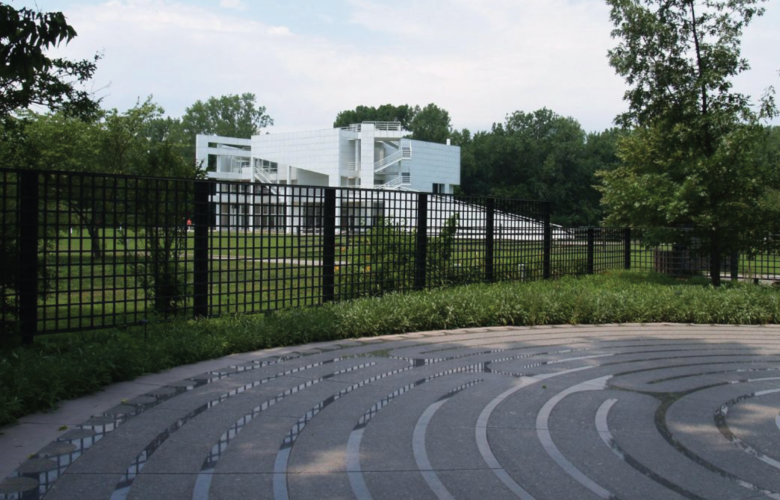Water’s Ways in New Harmony
October 4, 2021From a bustling agricultural area to utopian experiments to a historic site, New Harmony’s location on the Wabash River defined its industry and character.
New Harmony is north of the confluence of the Wabash and Ohio rivers where the rivers historically provided fertile soils and abundant plant and animal resources. The smaller rivers north of the area served as a drainage basin for the Great lakes and the annual snow melt carried soil to the region and fed wetlands that produced edible plants. It was an ideal area for settlement. Archaeologists have evidence of human presence dating back 12,000 years; by the time of European contact permanent villages had emerged alongside each other because the rich soils and hunting territory kept resource competition at bay. Some historians have described the area as a paradise of sorts where women took the lead in agriculture planting miles of crops and foraging wetland plants while men hunted wild game in the local forests. During the era of European conquest there were several indigenous groups in the region including the Miamis, Kickapoo, Shawnee, and Delaware.
A 1984 Corps of Engineers report described the area as “virgin” ignoring the extensive crops planted by local indigenous women, and the violent removal of them and their families. Early white settlement in the Indiana region was rivercentric, and Euro-Americans saw Indigenous settlements with their vast crops and game land as ripe for plunder. The French were the first Europeans followed by the English, who were less tolerant of the indigenous people and were determined to take control with violence if necessary. The indigenous resisted by creating a confederacy to prevent incursion. The Wabash river area provided the food resources needed to hold out against white encroachment; but this only increased the anger and determination of officials who wanted the territory. During the American revolution, George Rogers Clark secured the Southwest corner of what is today Indiana; white settlement remained concentrated near the rivers. To seize the remainder of the territory George Washington, aware of the importance of women in agriculture, advocated the kidnapping of the women and children to cripple resistance and secure Indian territory for white settlement.
Only a decade after the Treaty of Vincennes ceded the lower Wabash territory to the United States, the German millenialists known as Harmonists or Rappites, followers of George Rapp arrived. The group had recently sold a town in Pennsylvania and they ventured across the American frontier to the Wabash rivers banks. Their reasons for moving were driven by environmental considerations; the rich soil along the river was more suited to the grapes and other fruit crops that were central to the group’s economy and the river made transportation easier. In 1817, a French traveler witnessed the industry and ingenuity needed to live in the isolated town called Harmonie. He described buildings in the German manner in a “superb valley” nearly encircled by the river. Along the banks, the Harmonists planted an orchard using a style that worked with the land’s slopes and nearby was a grape orchard. They also built a grist mill and a cotton and woolen mill and raised Merino sheep and other livestock. The community found that those rich riverbank soils that sustained thousands of years of settlers made them one of the most successful enterprises in the state. But Harmonie was still too isolated to easily bring crops to market, and jealous neighbors made living in the area unpleasant. After ten years, the Harmonists sold their town to Robert Owen and moved back to Pennsylvania.
Owen, a Scottish industrialist and socialist, wanted to create a humane community; his vision appealed to several learned individuals and the group traveled to New Harmony on the Ohio River in the “Boatload of Knowledge.” Owen’s goal was to have a community of equals devoted to learning and study, unfortunately it barely lasted three years. Some claim it failed because Owen himself spent little time there, the people attracted to the area were also not accustomed to the rigors of frontier life. The very environment that proved so attractive to earlier settlers was less so for the utopianists hoping to realize Owen’s vision. Owen returned to Scotland while four of his son’s remained in New Harmony leaving an indelible mark on the state as women’s suffrage advocates, politicians, and educators.
The town reverted back to individual land ownership, and many of the residents turned to the areas ancient industry – agriculture. The state and federal government worked to try and make the river more navigable throughout the 19th century in an attempt to compete with railroads; those efforts ended by 1900, though barges continued to carry coal along the river. In 1930, a bridge was built in the town by a private contractor to facilitate travel to Illinois; structural problems forced its closure by 2012. For years it was the only highway bridge across the lower Wabash. Discussions to preserve the town as a historic site began in the 1930s. Robert Dale Owen’s great-grandson married the oil heiress Jane Blaffer Owen whose fortune from oil extraction helped fund its preservation. From a bustling agricultural area to utopian experiments to a historic site, New Harmony’s location on the Wabash River defined its industry and character.




